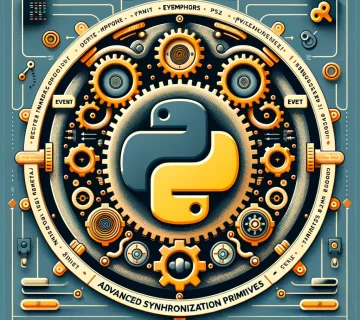In the realm of Python programming, understanding how to effectively convert between different data types—or type conversion—is crucial. This process can be implicit or explicit, shaping how data is manipulated and utilized in various programming scenarios. This post delves into the essentials of type conversion and casting in Python, providing insights into both implicit and explicit conversion techniques, alongside best practices to enhance your coding efficiency and reliability.
Understanding Type Conversion in Python
Python is dynamically typed, meaning you don’t need to declare the type of a variable when you create one. However, knowing how to convert data from one type to another is vital for data manipulation and operational functionality in Python scripts.
Implicit Type Conversion
Implicit conversion, or automatic type conversion, is handled by Python without any explicit instruction. This happens when you perform operations on two or more variables of different data types. For example, adding an integer to a float automatically converts the integer to a float to carry out the addition operation correctly.
a = 10 # Integer b = 5.5 # Float # Python automatically converts integer to float for addition result = a + b print(result) # Output: 15.5
Explicit Type Conversion (Casting)
Explicit type conversion, or casting, involves converting the data type of an object to another data type using predefined functions like int(), float(), and str(). This is necessary when you need to perform operations that require a specific data type or when data input types may vary.
# Converting float to int num_float = 9.8 num_int = int(num_float) print(num_int) # Output: 9 # Converting int to string num_int = 300 num_str = str(num_int) print(num_str) # Output: '300'
Best Practices for Type Conversion
- Clear Intent: Always convert types with clear intent. Implicit conversion may lead to unexpected results or errors.
- Error Handling: Use try-except blocks to manage errors that can occur during explicit type conversions, especially when dealing with user input.
- Consistency: Ensure consistency in data types when performing operations on collections like lists or when comparing values.
Practical Examples
Example 1: User Input Conversion
User input via input() is always read as a string. Converting this input to the appropriate type is essential for numerical operations.
# Reading an integer from user input
user_input = input("Enter an integer: ")
user_int = int(user_input)
print(user_int * 2) # Outputs the double of the entered integer
Example 2: Handling Mixed Data Types in Lists
When dealing with lists containing mixed data types, converting them to a uniform type can simplify further data manipulation.
mixed_list = ['5', 100, '30', 20] # Converting all items to integers int_list = [int(item) for item in mixed_list] print(int_list) # Output: [5, 100, 30, 20]
Conclusion
Type conversion and casting are foundational concepts in Python programming, enabling the manipulation and combination of various data types. Mastering these techniques allows for more flexible and error-free code. Remember, the key to effective type conversion lies in understanding when and how to apply implicit and explicit conversions, alongside adhering to best practices to avoid common pitfalls.
Do you have any questions or insights about type conversion in Python? Have you encountered any interesting challenges or solutions involving type casting? Share your experiences and questions in the comments below to foster our learning community.
With this foundational understanding of type conversion and casting in Python, you’re now better equipped to handle diverse data types in your programming endeavors. Stay tuned for more insights and tutorials in this series to enhance your Python programming skills further.





No comment